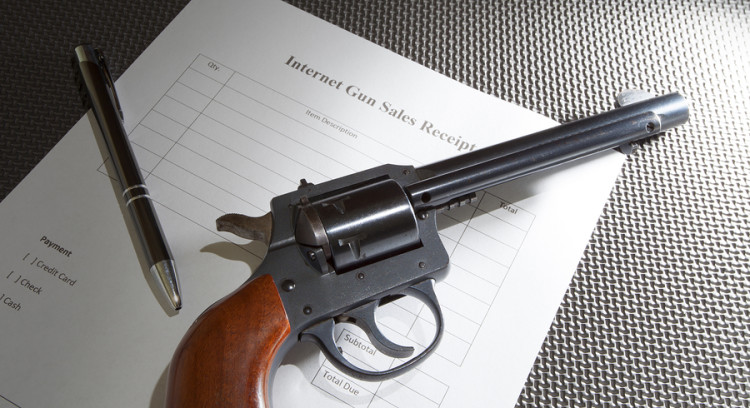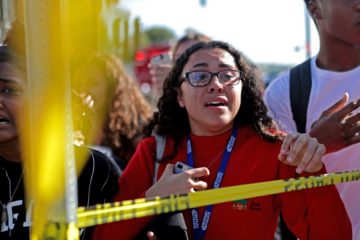Don’t Expect Health Coverage If You Survive a Gunshot Wound

(Bloomberg) —Among gunshot survivors, 51-year-old House Majority Whip Steve Scalise is an outlier. Such victims are more likely to be low-earning black men between the ages of 15 and 24. Scalise, who is white, does share one fundamental characteristic with these younger men: Being shot means he now has a preexisting condition in the eyes of health insurers.
For most people, that status could mean more financial suffering under a Republican rollback of the Affordable Care Act.
The ever-increasing ranks of American shooting victims could face higher insurance costs and less coverage if the ACA is replaced by a bill mirroring those pending in Congress. Survivors could run up against annual or lifetime dollar caps on coverage, which are prohibited under the ACA. That could mean death for some and financial ruin for others, since costs for lifetime care can run into the millions of dollars. Lower-income survivors, which are the majority of victims, benefited from expanded state Medicaid coverage in recent years. Some of them could lose their health-care coverage altogether.
The consequences of such changes, according to a report published Thursday by the Brady Campaign and Center to Prevent Gun Violence, is that taxpayers and consumers with private insurance will wind up paying much of the cost for that care. The gun-control group’s logic? Emergency treatment centers will have to offset debt from uninsured patients by raising prices for those who can pay and will require “greater contributions from other taxpayer-funded programs at the local and state level, which will result in higher private insurance rates and higher taxes.”
Close to 1,600 people are treated in U.S. trauma centers each week
From 2001 to 2015, there were more than 1 million non-fatal firearm injuries, according to data from the Centers for Disease Control and Prevention. Close to 1,600 people are treated in American trauma centers each week, according to the Brady report. Just over the long July 4 holiday weekend, at least 102 shootings took place in Chicago, with 87 survivors, according to the Chicago Tribune. While 34,000 people die from gunshots each year, 81,000 people survive, the Brady report states, and their medical needs can be huge.
The bill for initial hospitalization of people with gunshot injuries from 2006 to 2014 averaged more than $730 million annually, according to a 2017 study from Stanford University. The average cost per patient was between $24,000 and $32,000. That doesn’t include rehabilitation, money lost due to not being able to work, the financial impact on families, or future hospital visits. Under the ACA, initial hospitalization is covered, as is follow-up care. Of the gunshot costs tallied in the Stanford study, Medicaid covered about 35 percent of the costs and Medicare about 6 percent, for a total of 41 percent.
The tab for the ongoing health-care costs for gunshot survivors is hard to pin down, in part because one government agency was effectively prohibited from researching the issue.
In 1996, an amendment attached to an appropriations bill cut $2.6 million from the CDC budget—the amount the agency had spent on firearm-injury research in the prior year. The amendment from Republican congressman Jay Dickey, a member of the National Rifle Association, stipulated that “none of the funds made available for injury prevention and control at the Centers for Disease Control and Prevention may be used to promote or advocate for gun control.”“It was a shot across the bow from a Republican-dominated Congress warning people that if you do research in the area of firearm injuries we can make your life miserable and your funding insecure,” said Dr. Mark Rosenberg, who was the director of the CDC’s National Center for Injury Prevention and Control, where gun violence research was being done at the time. That put government-funded research into how to prevent gun violence into a deep chill. A spokesperson for the NRA declined to immediately comment.
Additional societal costs that frequently result from gunshot wounds may cost as much as$174 billion annually
Academic studies cite staggering cost estimates for gun violence: A 1997 report estimated that gunshot wounds cost Americans $126 billion annually, including medical, public service, and work-loss costs. On a national per-capita basis, the cost was $495. A 2016 paper, “Gunshot Wounds: A Review of Ballistics, Weapons, and Myths,” whose authors include a surgeon on the team that treated U.S. Representative Gabrielle Giffords of Arizona after she was shot in 2011, wrote that: “It is not unusual to have survivors accumulate hospital costs of more than $1 million a year, and some have total hospital and recovery costs of more than $10 million.” Since most survivors cannot pay that, “the burden falls on society and taxpayers,” the article states, noting that additional societal costs associated with the permanent disabling and unemployment that frequently result from gunshot wounds have been estimated at between $100 billion and $174 billion annually. Dickey, the Republican who sponsored the CDC funding cut, came to believe that the U.S. had a problem in preventable gun deaths and to regret his amendment, said Rosenberg. The two men became friends, and in the wake of the 2012 mass shooting in Aurora, Colo., they co-wrote an editorial for the Washington Post titled, “We Won’t Know the Cause of Gun Violence Until We Look for It.” Rosenberg went on to become president of the Task Force for Global Health; he retired from that job in 2016. Dickey died in April.Rosenberg remains frustrated that research still isn’t being done by the CDC into ways to prevent gun violence. “The horrifying part of this is that these are preventable deaths, and there are ways to both protect the rights of law-abiding gun owners and markedly reduce gun violence,” he said. “This problem is solvable, and we could get the answers for one-tenth of one percent of what the problem costs each year. Tragically, we are so dug in and our politicians are so polarized and oppositional that we are not even asking the questions.”
Michael Bloomberg, the founder and majority owner of Bloomberg LP, is an advocate of gun restrictions.





No Comment